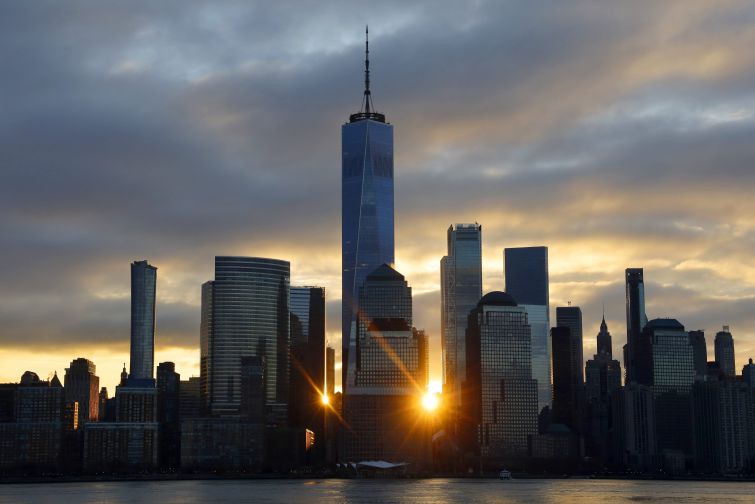Cushman & Wakefield to Consolidate Lower Manhattan, Brooklyn Offices
The big commercial real estate brokerage is also exploring hybrid working models for its employees
By Tom Acitelli January 6, 2021 1:18 pm
reprints
Cushman & Wakefield (CWK), one of the world’s largest commercial real estate services firms, plans to consolidate into a single location its Lower Manhattan office at One World Trade Center and its downtown Brooklyn office at One Pierrepont Plaza, Commercial Observer has learned.
There is no firm timeline on the consolidation, Toby Dodd, Cushman & Wakefield’s tri-state president, said on Wednesday, shortly after a town hall with employees that addressed the impending changes. The company will take at least the first six months of 2021 to explore its options and make a decision, including on where to locate its new office and just how much office there will be. Dodd would only say that that new location would be in Lower Manhattan east of One World Trade.
“So, we’re going to be bringing those teams together,” Dodd said of the current offices. “Hence, the reason for moving more toward the east, because people based in those offices are going to be serving both of those markets.”
Cushman & Wakefield occupies about 10,000 square feet at One World Trade, which the Durst Organization and the Port Authority of New York & New Jersey developed. The company leases about 15,000 square feet at One Pierrepont, which Brookfield (BN) Properties controls. A Cushman & Wakefield spokesman confirmed that the company plans to sublease these spaces (something not uncommon in today’s Manhattan office market).
The company also plans to review its business needs in Midtown Manhattan, where the publicly traded firm has its New York-area hub at 1290 Avenue of the Americas, Dodd said. There are no plans to leave that building or Cushman & Wakefield’s Queens office at 118-35 Queens Boulevard.
According to Dodd, too, the Lower Manhattan-downtown Brooklyn consolidation was under consideration before the coronavirus pandemic upended the commercial real estate market in New York and globally. Dodd, who took over his role as tri-state president in January 2020, two months before the pandemic swamped the U.S., said Cushman & Wakefield had already been planning to map out its own office needs for the next decade and that that included possible physical moves.
It has based its decision-making on its own research into the evolution of the modern office and how its users work, pre-COVID and beyond, Dodd said.
Interestingly, though Dodd said the pandemic did not directly spawn the new consolidation plans, Cushman & Wakefield did gain particular notoriety for advising other office tenants amid the pathogen’s tumult. Its “6 feet office” idea — wherein firms lay out their footprints to provide a healthy distance between teams and workers — made headlines worldwide and became a kind of jumping-off for even discussing the post-COVID office.
As for what that office will look like for Cushman & Wakefield, hybrid will be a part of it. Dodd, for his part, said that what he described as “this Zoom teams world” will continue to be a feature of doing business post-COVID. It’s necessary, then, to build an office environment to support that.
“This new flexibility, or the acceleration of flexibility, I think, is a good thing,” Dodd said over the phone from 1290 Avenue of the Americas. “I’ve been in the office since the 23rd of June, but that newfound flexibility will accelerate and people will work where they need to work for the task at hand. So, it may be that people spend a day working from home, it may be they spend a day working from a third place; they spend a few days working from an office. … Certainly, for our business, it’s about the outcomes we provide for our clients.”


